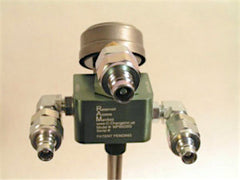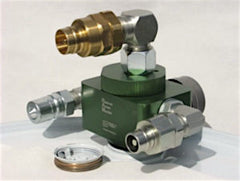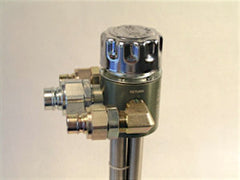Learn More
The Problem
Hydraulic and lube fluids need to start and remain clean and dry for reliable hydraulic machines. Up until now there has been no easy way to attach a filter cart or oil conditioning system to reservoirs and oil containers with the system closed to atmosphere so it’s not done.
The Solution
Our Reservoir Access Manifolds supply one or two large positional down tubes terminating below the fluid level to draw fluid out – filter, dry or cool – then return it back to the reservoir (offline filtration) using existing openings with no fabrication. Our adapters make it simple, clean and practical to have reliable machines.
The Result
The Bolt Down Reservoir Access Manifold has an oil sampling port which makes taking samples simple. Oil sample results will dictate when to deploy offline filtration or when an oil change out is truly needed. This operational change will result in significant cost savings, less pollution, and reliable hydraulic equipment.
Okay, tell me more....



PROACTIVE FLUID MANAGEMENT just got easier, imagine conditioning fluid Before, During, and After being added to the reservoir while keeping the system closed to contaminates.
Before: Bulk container fluid filtering
During: Fluid transfer
After: Off-line reservoir fluid filtering
Here is a video of our Founder, Marc Watson, introducing the RAM:
Benefits
- Greatly extend fluid life
- Reduces waste and cleanup costs
- Maximize component life
- Lessens Liability risks due to spills
- Suction access for a back up pump source
- Simple tank pressure measurements
- Reduce downtime and troubleshooting costs
- No tools necessary, use quick disconnects
- Extend existing system filter life
- Filter with system on or off
- Tank to tank fluid transfer
- Safe fluid sampling
Challenges in Current Hydraulic Oil Access
Access to the reservoir fluid in a hydraulic or lube system is difficult because systems are closed to atmosphere, and very few manufacturers incorporate down tubes in their reservoir designs. When filling a fluid reservoir, the current practice is to pour by hand or use a hand pump or filter cart to transfer fluid from a bulk container to the reservoir. The new fluid is generally added through the filler/breather twist cap or threaded opening on the top of the reservoir, allowing airborne particulates to enter the reservoir and contaminate the fluid. New fluid entering the reservoir is typically not pre-filtered and can be highly contaminated. Most filter carts utilize two tubes or wands to exchange fluids; one is inserted in the bulk container and the other in the reservoir to be filled. This process only results in one pass through the filters; it can take multiple passes to reduce the contamination level to desired standards. Accidental over filling and spills are common when transferring fluids, increasing environmental pollution, clean up costs, and the risk of personal injury.
WHAT IF: Fluid Replacement was Delayed
Fluid replacement should be driven by sampling results, not based on hours of use. Users of the RAM can take oil samples with the system in use or not, no more tapping into pressurized systems to pull a fluid sample. Lets help save oil a non renewable resource while saving labor, clean up costs and decreasing environmental pollution.
WHAT IF: All Fluid was Pre-filtered
Pre-filtering oil maximizes component life. Over 75% of component failures are the result of contamination. Most new oil has approximately 400% more particulate matter than the average component can tolerate. Users will substantially reduce component repair and replacement costs.
WHAT IF: Off-line Filtration Became the Norm
Imagine fleet staff easily moving a filter cart from vehicle to vehicle during downtime. They can add and subtract oil, pull oil samples, and filter the oil through a RAM using quick disconnects, no tools necessary. This is accomplished while maintaining a system completely closed to the outside environment. Systems can be continuously closed-loop filtered, cooled, and dried with the system in use or not. The next day each vehicle starts out with polished oil.
WHAT IF: Pump Substitution was Simple
With the RAM you can use a standby pump instantly! By attaching a suction hose from the standby pump to the RAM’s suction port users can access the same reservoir fluid. The standby pump’s discharge fluid can be connected through a line using quick disconnects back into the system. This exchange can be done in minutes using no tools, and reducing lost production. Let’s make our industry cleaner and greener, saving valuable resources in these difficult economic times. Let’s help our planet by using less oil, cutting waste and clean up costs. Machines will be more reliable and efficient. Industry can delay machinery and component replacement making them more competitive.

See datasheets, how-to videos, and supporting industry literature on the Technical Details page.
